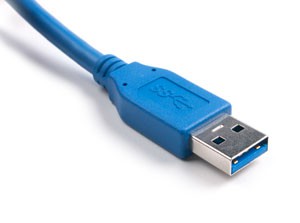 You’d have to know if USB 2.0 will be replaced by USB 3.0 started in 2010.
You’d have to know if USB 2.0 will be replaced by USB 3.0 started in 2010.
I also cannot wait to be there in Indonesia …. follows the explanation
USB 3.0 Specification:
Transfer Rate
USB 3.0 data transfer speeds of about 3200 Mbits/s (3.2 GBits/s or 400 Mbytes/s), and in theory can achieve 4.8 Gbit/s. This speed is 6 to 10 times faster than USB 2.0 maximum speed.
Data Transfer
USB 3.0 data transfer technology introduces two-way (full duplex), so it can read and write data simultaneously (simultaneously). USB 2.0 and earlier do not support this bi-directional technology.
Power
Electric voltage is derived from 4.4 V to 4V, then the flow also improved (to 150mA), so in addition to more energy efficient, a USB 3.0 port can be used 4-6 and increase the recharging device.
Power Management
Power management is better than USB 2.0, thus supporting the idle, sleep and suspend.
Physical Forms
Edge USB 3.0 will be the same as USB 2.0 (standard), but the cable therein will be more, there are an additional four USB 2.0 channels compared to cable (a total of nine cable channels).
Compatibility
USB 3.0 compatible with USB 2.0, so USB 2.0 devices will still be used in USB 3.0 port and will work with USB 2.0 standard speed. But not vice versa, a USB 3.0 device cannot be installed on a USB 2.0 port.
Operating System Support
Windows Vista, Windows 7 and Linux already support USB 3.0, and Mac will soon follow. But for Windows XP until now there is no certainty whether there will be an update to this new interface.
LACK of USB 3.0
Cable Length
Maximum length of a USB 3.0 cable will be reduced to 3 feet (USB 2.0 up to 5 meters). While this can be overcome by adding a USB Hub.
Speed Limit
Not all devices can use a USB 3.0 full speed, such as magnetic hard disk is limited to the speed of rotation of the disk copies.